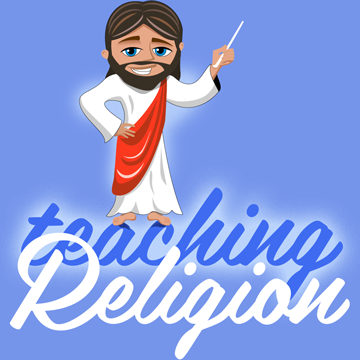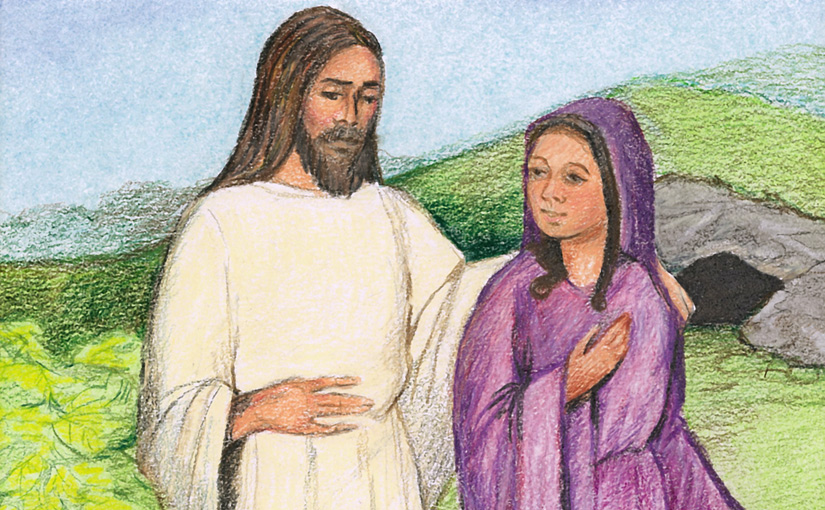Aim: To help the teacher-trainer acquire an understanding of the dynamics of meditation and prepare teachers to use this teaching method effectively.
Prepare for the teachers meeting.
Workshop Materials
- Classroom Meditation Part I: Teaching The Resurrection classroom lesson plan.
- Classroom Meditation Part III: Jesus Appears to Mary Magdalene.
- Parts I and II are included in the workshop kit. Please visit the links below to download the kit and the classroom meditation video.
- Part III contains more content you can use to present this workshop.
The best way to prepare teachers to teach a lesson is to have them experience it pretty much as their students will. The only difference is that, from time to time, you will ask them to stop and discuss methodology or a point of theology.
Start by discussing the less familiar teaching method, the meditation. Use the remaining time to review the presentation and meaning of the Resurrection appearances. You might begin by asking your teachers to describe their own experiences with meditation. Then, introduce the meditation by describing it.
Our meditation includes both music and art. A member of my congregation, who is a professional artist, created six beautiful drawings that illustrate the story of the risen Christ’s appearance to Mary Magdalene. While the scenes unfold, they are accompanied by Austin Miles’ hymn, In The Garden.
Show the Classroom Meditation
Discuss the Psychology of Meditation
The meditation teaching method is not commonly used in the classroom. Thus, we must prepare our student’s imaginations for this activity. During the first part of the lesson, they will focus on the text. Not only will they learn the basic facts of the Risen Christ’s appearance to Mary Magdalene, they will also see that this story comes from the Bible. This gives our meditation an air of importance.
Through a meditation we knock on three doors to our students’ brains: sight, sound, and emotion. This multi-sensory approach is key to good teaching.
Our students like pictures. Our students like music. And, they like to feel joy. An activity that combines all three gives them an especially pleasing learning experience. Through images that show Mary’s story, and a song that expresses her feelings, we will spirit our students back two thousand years to the garden outside Jesus’ tomb. Along with Mary, they will experience the moment when the Risen Christ first appears to her, and she realizes that something wonderful has happened. He lives!
How to Apply the Meditation Teaching Method
I struggled to learn how to use this meditation. As I planned the lesson, I became more aware of the fact that it called for some tricky mood management in the classroom. I offer my journey to a solution with the hope that your teachers will learn more about mood management.
The problem I faced was in the transition from one mood to another. By using the meditation at the end of the class, I would try to gradually change the classroom mood from lively to calm. This is quite difficult to accomplish in a relaxed manner. An abrupt change can leave students feeling grumpy. So, in order to ensure a smooth transition to meditation, I had to review what I knew about the way our brains work.
Brain Chemistry And Learning
Our brains respond to changes in our environment by creating the proper mood response for a given situation. Somewhere inside our brains there is a “driver,” who is a bit like the driver of an automobile. In this case, the driver controls the length of our brainwaves. And, different brainwave sizes create different moods.
The brain’s appropriate response to a busy classroom scene is to create short brainwaves called beta waves. These make us alert and ready to participate in whatever activity is going on. On the other hand, when we are in a situation that requires us to be quiet and receptive, the brain creates longer waves, called alpha waves. These ease us into a calm mood.
Moving students from one brainwave state to another should be done slowly. A fast transition from beta to alpha is extremely difficult to enact, because this transition requires time. It’s like falling asleep; the muscles need time to relax before the chemical reactions that create alpha can be completed.
As I searched for something that would prepare our students for a meditation, I recalled that Austin Miles, the composer of In the Garden, wrote a fascinating description of the way God inspired him to compose the hymn. I also knew that telling his mystical story, with its dreamy mood, would gently ease our students into alpha and make them ready for the meditation.
Austin Miles’ story appears in the classroom lesson plan (Part II).
Gathering Material
I chose In The Garden for two reasons. First, it is my favorite hymn. Second, it is easier to illustrate a hymn than to find music that fits a picture.
Even so, finding good artwork was difficult. I searched through a catalog of museum quality prints, but they all felt too heavy. Each painting was created by a master artist, and intended to be displayed by itself. The different styles used in the museum pieces made the scenes in the story of Christ’s appearance to Mary Magdalene feel disconnected.
Finally, I asked an artist in our congregation to illustrate the hymn. She created the drawings with pastels, and I liked them so much that they now hang in my dining room.
Conclusion
The meditation teaching method educates the emotions. My teachers and I have used this meditation many times with students from fifth grade through adult. So far, it has always left our students feeling as if they had shared a wonderful experience with Mary Magdalene.
What else can a teacher ask for, other than that her students identify with a major biblical story?

